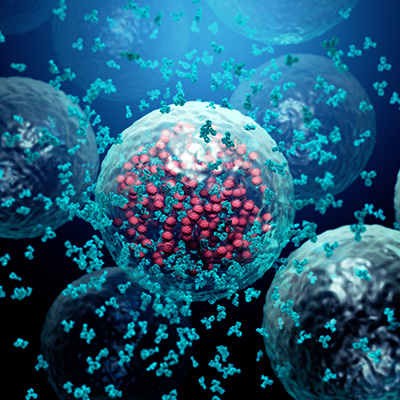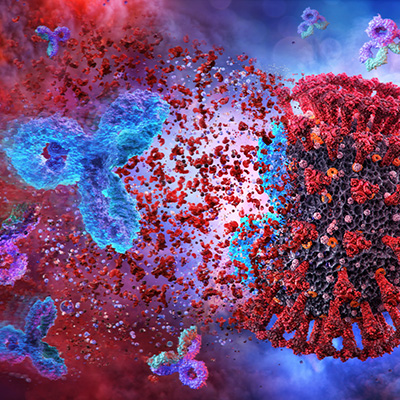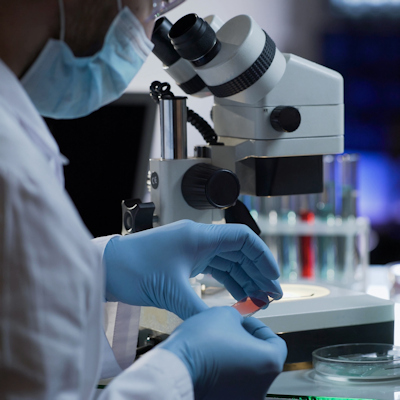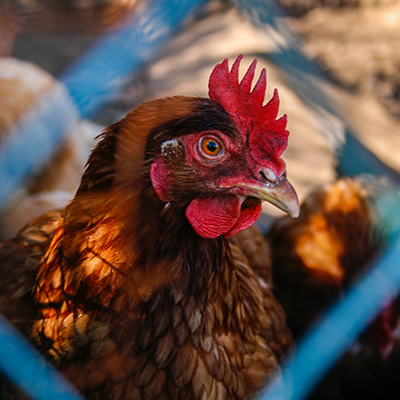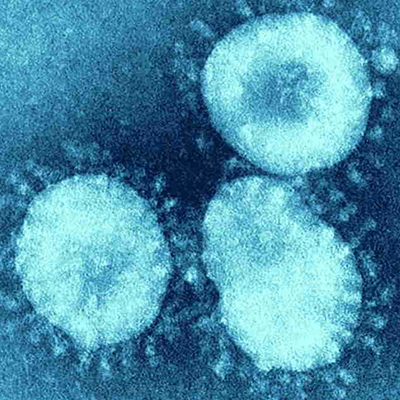September 15, 2020 -- An engineered antibody fragment has been developed as a highly potent neutralizer of SARS-CoV-2. For the first time, one of these tiny molecules has been tested for efficacy in in vitro and in vivo infection models. The results of the collaborative study were published in Cell on September 14.
Monoclonal antibodies have emerged as potentially effective prophylactic and therapeutic candidates against SARS-CoV-2 infection, as some antibodies isolated from convalescent human donors have demonstrated neutralizing activity. However, these are usually in the immunoglobulin G1 (IgG1) format and have a molecular mass of about 150 kDa, which makes them difficult to convert into clinically useful therapeutics.
Alternatively, antibody domains and fragments such as fragment antigen binding (Fab), single-chain variable fragment (scFv), and heavy-chain variable domain (VH) are attractive formats for candidate therapeutics due to their low molecular mass (under 50 kDa). They are better able to penetrate tissues and have faster clearance rates compared to full-size antibodies, while maintaining high stability and affinity to antigens.
These antibody components can be directed to SARS-CoV-2 receptor binding domain (RBD) epitopes to elicit neutralizing antibodies that confer protection against infection. Thus, developing potent neutralizers with the target of the SARS-CoV-2 RBD may be effective in preventing disease.
Finding an effective antibody component
To find the most potent neutralizing VHs against SARS-CoV-2, researchers from the University of Pittsburgh School of Medicine, led by Wei Li, PhD, assistant director of the University of Pittsburgh (Pitt) Center for Therapeutic Antibodies, screened a large phage-display human VH antibody library against recombinant RBD.
Of these, they identified ab8, a human IgG1 crystallizable fragment (Fc) fusion format, which showed the most potent neutralization activity and specificity against SARS-CoV-2 in vitro and in mouse and hamster models. Next, to increase the VH ab8 avidity and extend its in vivo half-life, it was converted to a bivalent antibody domain by fusion to the human IgG1 Fc (VH-Fc ab8).
Putting the tiny antibody component to the test
After ab8 was engineered by scientists at Pitt, the molecule was collaboratively evaluated in conjunction with scientists from the University of North Carolina at Chapel Hill (UNC) and University of Texas Medical Branch (UTMB) at Galveston, as well as the University of British Columbia and University of Saskatchewan.
To begin, a team at UTMB's Center for Biodefense and Emerging Diseases and Galveston National Laboratory, led by Chien-Te Kent Tseng, PhD, tested Ab8 using live SARS-CoV-2 virus. They found that ab8 blocked the virus from entering cells, outperforming the angiotensin converting enzyme 2 (ACE2) receptor for binding to the RBD. The location of ab8 bound to the S protein directly overlapped with the region that would be occupied by ACE2 when bound to the S protein. This suggests that the neutralizing activity of ab8 is likely derived from its ability to block ACE2 binding.
The SARS-CoV-2 RBD has a heterogenous conformation where two epitopes in the trimer are in the "down" or occluded position, and one is in the "up" presentation. Using electron microscopy techniques, Sriram Subramaniam, PhD, and his colleagues at the University of British Columbia uncovered that ab8 was able to simultaneously target all three epitopes that are otherwise inaccessible to full-length antibodies, regardless of conformation. This contributes to the high-affinity binding of ab8.
With these results in hand, Ralph Baric, PhD, and his UNC colleagues tested ab8 at varying concentrations in mice using a modified version of SARS-CoV-2. They found that ab8 significantly decreased infectious virus by 10-fold at two days post infection even at a very low dose of 2 mg/kg in mouse models, compared to untreated counterparts.
Ab8 also showed prophylactic and therapeutic efficacy against SARS-CoV-2 infection in hamsters, as evaluated by Darryl Falzarano, PhD, and colleagues at the University of Saskatchewan. In hamsters, ab8 was able to reduce viral loads in the lung, alleviate pneumonia, and reduce viral shedding in the upper airways.
Moreover, the small size of ab8 (half of a full-size antibody) can be an advantage in that small quantities are needed to be effective. In combination with increased tissue penetration, the decreased size of the molecule can result in a highly potent inhibitor of SARS-CoV-2.
"Ab8 not only has potential as therapy for COVID-19, but it also could be used to keep people from getting SARS-CoV-2 infections," said co-author Dr. John Mellors, chief of the infectious diseases division at UPMC and Pitt, in a statement. "Antibodies of larger size have worked against other infectious diseases and have been well tolerated, giving us hope that it could be an effective treatment for patients with COVID-19 and for protection of those who have never had the infection and are not immune."
Attractive developability profile
The authors noted several properties that make it a good candidate for developability including stability at high concentrations and long incubation, and zero or very low aggregation. Antibody nonspecificty and polyreactivity to other proteins in the body can be a large obstacle for developing antibodies into clinically useful therapeutics. Polyreactivity can cause off-target toxicities and interfere with normal cellular function. In a membrane protein array assay, the team found that ab8 did not bind to any of the 5,300 human membrane-associated proteins, suggesting that it is highly specific and therefore has a low potential for off-target toxicities in vivo.
"The COVID-19 pandemic is a global challenge facing humanity, but biomedical science and human ingenuity are likely to overcome it," Mellors commented. "We hope that the antibodies we have discovered will contribute to that triumph."
Do you have a unique perspective on your research related to drug development or immunology? Contact the editor today to learn more.
Copyright © 2020 scienceboard.net




